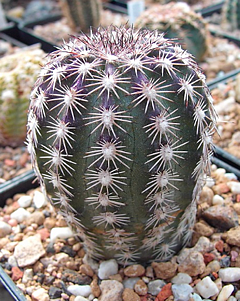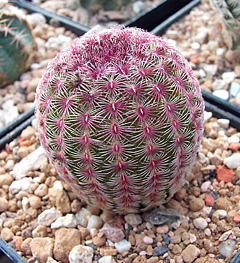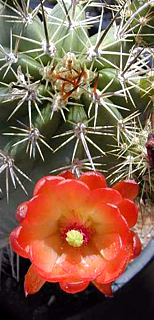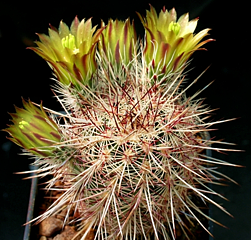Echinocereus is a genus that is much loved by cactus growers world-wide. There are several characteristics that collectively account for their popularity. All Echinocereus are small plants that are quite suitable for growing in pots and greenhouses.
The stems of this genus are more often than not under a foot in height and perhaps 2 or 3 inches in diameter. Some are slightly bigger, some smaller. In the wild, some species may form large mounds of many hundreds of stems, but this takes many years and these same species are still quite manageable in cultivation.
There is a wide variety of spination that includes some of the most fierce and dramatic spines covering the plant stem so that it is not even visible. Most have moderately sized spines evenly distributed, some have very colorful spines even in alternating patterns. Some have pectinate (comb-like) spines and some are nearly spineless. The spines are arranged on ribs.
Aside from being a cultivation-friendly size, Echinocereus have some of the most brilliant flowers of the cactus family. They range in color from electric-pink to deep scarlet to translucent browns and greens and even bright yellow. Many species feature two-toned flowers with one color toward the center and another color on the outer parts of the flower.
One particular population exists in New Mexico, USA of naturally occurring hybrids that display much of this color range on one hillside from plant to plant. The flowers can be 3 inches or more in diameter and feature spiny floral tubes. Close examination reveals that the flowers actually break through the epidermis of the stem as do any new offsetting stems.
In the wild, Echinocereus range from as far north as South Dakota, USA and south through most of Mexico. They inhabit a wide range of habitats growing under Ponderosa forests to coastal plains; from low elevation deserts to mountainsides of 8000 feet or more. There can be a tremendous amount of variation within species and this can make identification especially tricky in some instances.
Submitted by: Jim Tanner



